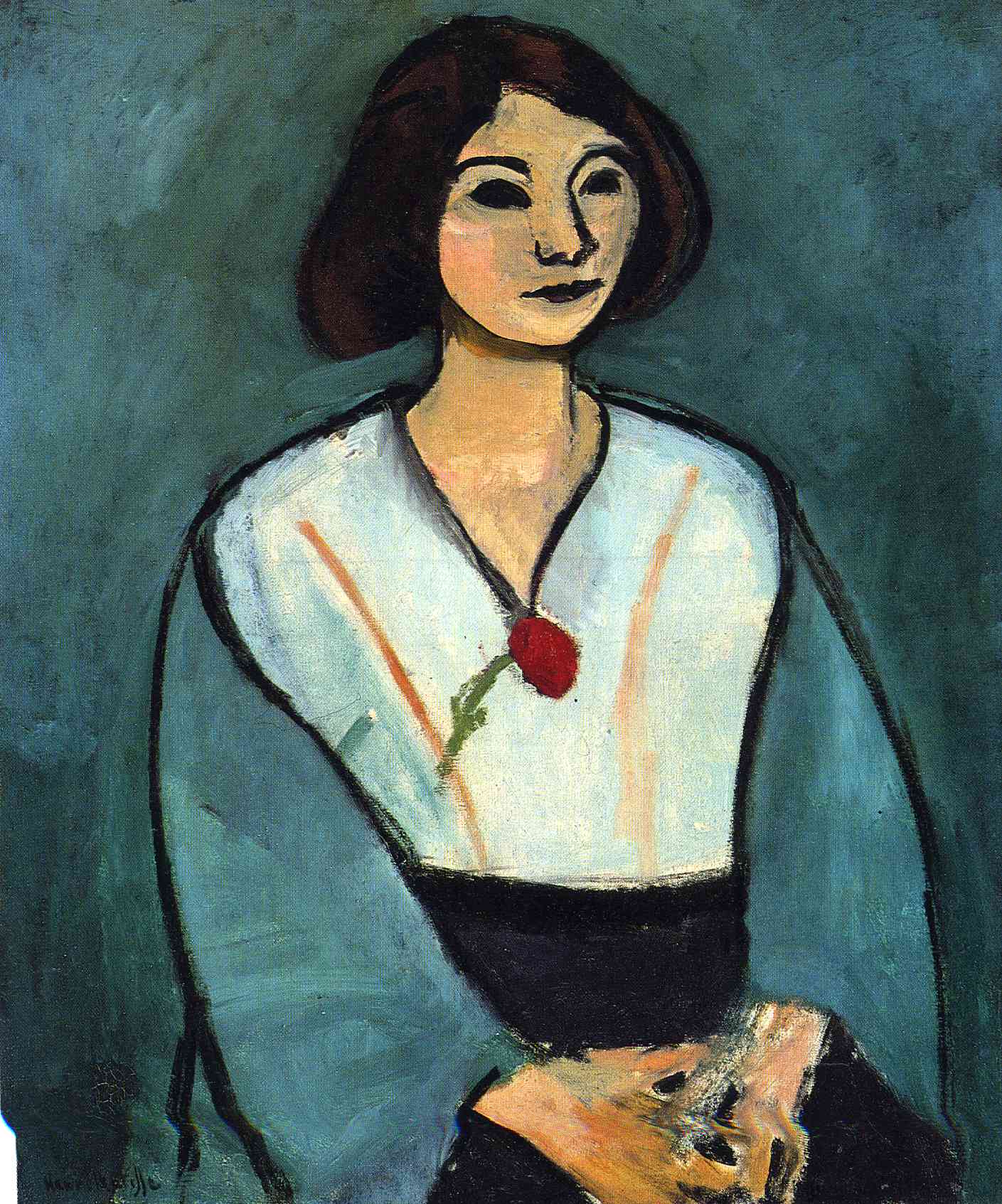art-Matisse.com
Henri Matisse 1869-1954
©Henri Matisse - Woman in Green with a Carnation 1909
 Woman in Green with a Carnation |
From the Metropolitan Museum of Art, New York City:
Also known as "Woman with a Red Carnation", this work was painted in the summer of 1909 during a stay in Provence, in the south of France. Scholars have had no difficulty identifying the sitter - who appears in a number of works created that summer - in this clear portrait likeness: the straight back and slender neck, the confident holding of the head, the pointed oval of the face. But this painting is not intended to be a portrait; the emphasis is on the supra-individual, something far beyond the sitter's character, and thus, ignoring the sitter's identity, the painting bears a neutral title, "Woman in Green". The profound, intense, complex green colour is not simply decorative, it arouses a sense of the cool of the watery depths and of dense vegetation, it becomes the embodiment of mystery and life. Yet the magic of the dominant green cannot prevent us from perceiving the human figure, firmly and simply outlined, totally enclosed within itself. The young woman is calm, majestic and a little mysterious, her bottomless black eyes looking rather into themselves than at us. On the light green blouse, dead in the centre of the painting, burns the sole bright patch, the red carnation.